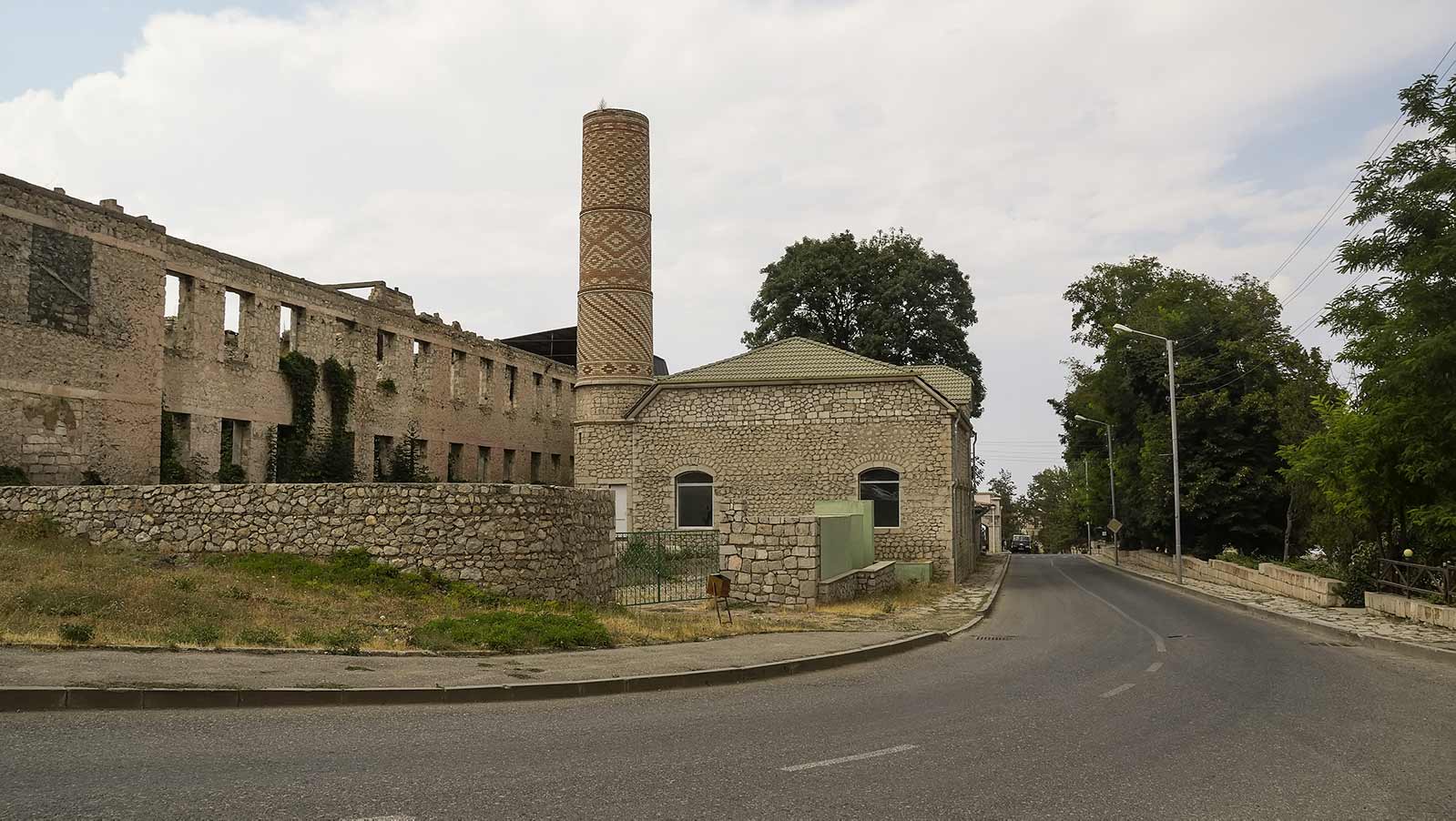Saatli Mosque in Shusha: Molla Panah Vagif taught here
Saatli Mosque is considered as one of the oldest architectural and religious monuments of the city of Shusha. The mosque is located in the eponymous quarter. On January 14, 2021, during the visit of Azerbaijani President Ilham Aliyev to Shusha, he visited Saatli Mosque and presented to the mosque a Koran brought from the city of Mecca.

Saatli Mosque in Shusha got its name from the quarter itself, which was founded by the Azerbaijani poet, statesman and vizier of Ibrahim Khalil Khan of the Karabakh Molla Panah Vagif, who settled here together with representatives of 17 families from the Azerbaijani Saatli clan.
[K.M. Mammadzade. N.A. Sarkisov. Shusha – Vagif`s mausoleum. 1986, p. 18]
[Ch.Gajar. Old Shusha. 2007, p. 96]
Saatli Mosque in Shusha was built in 1883 by Azerbaijani architect Kerbalai Sefi Khan Karabagi on the site of the old mosque. The date of construction of the old mosque is considered to be 1759. According to the Azerbaijani scientist Chingiz Gajar, it was built by Panakh Ali Khan of Karabakh.
At the entrance of the mosque the following inscription has been engraved on the plaque:
“In the name of Allah,.. merciful and just.
With faith to Allah, to the Day of Judgment and Muhammad, Ali, Fatima, Hasan, Huseyn.
Architect Kerbelai Karabaghi 1301 h. (1883)”.
[Ch.Gajar. Old Shusha. 2007, p. 127]
[K.M. Mammadzade. N.A. Sarkisov. Shusha – Vagif`s mausoleum. 1986, p. 18-19]
In Saatli Mosque, there was a madrasah founded by Molla Panah Vagif. On the memorial plaque installed in the Soviet years, the following was written:
“Here, M.P. Vagif opened a school in 1759 and taught”.
[Ch.Gajar. Old Shusha. 2007, p. 127]
[K.M. Mammadzade. N.A. Sarkisov. Shusha – Vagif`s mausoleum. 1986, p. 18-19;23]
Saatli Mosque excels the other quarter mosques with its interior decoration, stained glass windows and wood carvings. The wall-painting of the mosque hall was done by Azerbaijani artist Mir Mohsun Navvab.
[Ch.Gajar. Old Shusha. 2007, p. 127;246]
In the book “The Architecture of the city of Shusha and the problems of preserving its historical appearance” by E.Avalov written in 1977, the mosque is described as follows:
“Stucco work decoration is mostly used in the interior of the mosque. While small booths for the muezzin (a servant or one of the parishioners of the mosque performing the call of Muslims to prayer – azan) are installed on the roofs of the other quarter mosques of Shusha, Saatli mosque is decorated with an attractive patterned minaret made of brick. The ornament of the minaret of Saatli mosque corresponds to the ornament of the Karabakh pile-free Zili carpet. This minaret, unlike the minarets of the cathedral mosques of Shusha, is adjacent to the mosque, since it is its late outbuilding. The entrance to Saatli minaret is isolated from the courtyard. Spectacularly viewed from the Bazar Bashi Square, the high round minaret of Saatli Mosque, with its expressive color vertical, created a kind of distinctive compositional silhouette and was the last element of the adjacent commercial street.
[E.Avalov. The architecture of the city of Shusha and the problems of preserving its historical appearance. 1977, p. 77;80]
According to the Azerbaijani scientist Chingiz Gajar, in 1910, the architect Sefi khan Karabagi fell from its minaret while repairing the mosque and subsequently died from his wounds.
[Ch.Gajar. Old Shusha. 2007, p. 252]
After the occupation of the city of Shusha by Armenian armed formations, in May 1992, the mosque was destroyed.